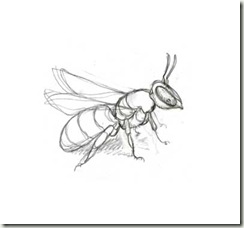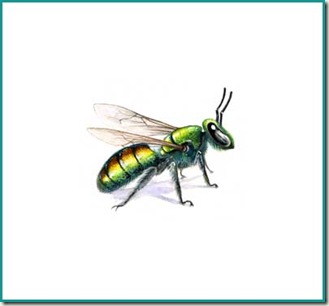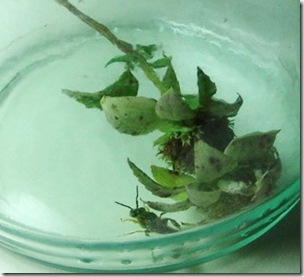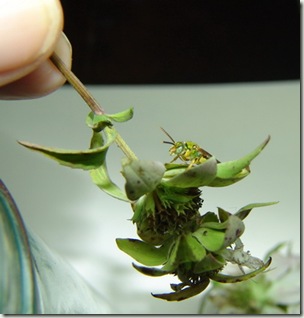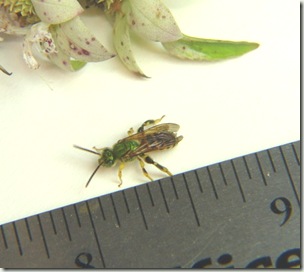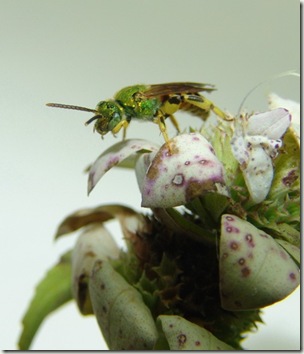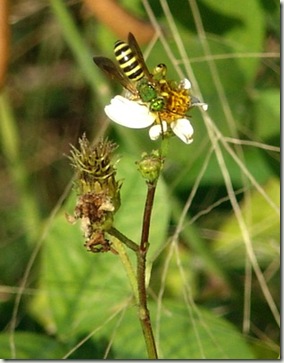This lovely tiny bee is only 1/4 inch long. Augochlorella aurata is another one of the ancient family of Hallictid “sweat” bees but much smaller than my cheeky little Agapostemon from a couple of weeks ago.
I am sure I would never have seen it in the wild but this bee came to me in a fascinating selection of native research bees very kindly sent to me by Sam Droege who works at the excellent Patuxent Wildlife Research Centre in Maryland.
The centre is an important international research facility for wildlife science, helping improve the understanding of native species and natural resources.
Do visit their comprehensive and fascinating website that has so much information about wildlife in general and the interesting history of the centre, here.
We may think that concern about our native species and agriculture is fairly new but back in 1934 the centre was set up under the direction of the appropriately named Mr. J. N. Darling,
“The original idea of the station visualized a demonstration area stressing the importance of the relationship of wildlife to agriculture.”
Sam Droege is, amongst other things, involved in the development of online identification guides to North American bees and the development of monitoring programs for native bee species.
He contributes to the excellent Discover Life site who are also organising BEE HUNT next year… get involved if you can.
Some facts about the Augochlorella
CLASS: Insecta
ORDER: Hymenoptera, Bees, wasps, ants and sawflies.
SUPERFAMILY: Apoidea. Bees and some wasps.
FAMILY: Halictidae (Sweat Bees)
GENUS: Augochlorella
SPECIES: Augochlorella aurata
They are common throughout all of the USA and can be seen from April-October. They are nesting bees, eusocial and will burrow in rotting wood or well drained soil.
To encourage them, grow native Dogbane Apocynum cannabinum, Fleabane Erigeron strigosus, Slender Mountain Mint Pycnanthemum tenuifolium and the Goldenrods Solidago odora, Euthamia graminifolia.
In return they will pollinate your peppers, strawberries, tomatoes, and watermelons The bees vary in colour considerably.
Sam’s bee is a fugitive dark bronze, clad in gold/green armour, looking black until it just catches the light and changing with every different direction you look at it.. aurata indeed!
What’s in a name… just for those like me who are fascinated by the etymological origins of the beautiful words that we give our biological and botanical friends :.. Aug.. to enhance, Latin; Chlorella from the Greek word chloros meaning green and ella, the diminutive; Aurātus ‘gilded, golden’, perfect passive participle of aurō ‘gild, overlay with gold’, from aurum ‘gold’.
How very beautiful…
A sketch for the pose..
______________________________________________________________
Tiny Green Gold Sweat Bee: Augocholrella Aurata
Watercolour on Arches HP. image size 3.5”

